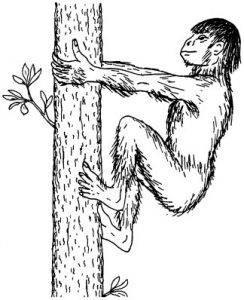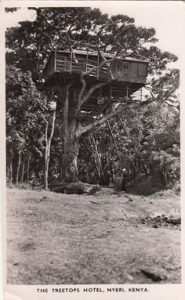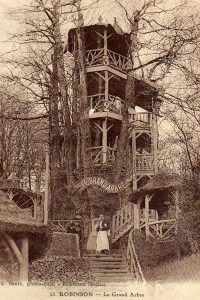First of our Weekly Blogs on anything and everything to do with Treehouses!
The history of treehouses! Whilst as humans we abandoned arboreal living around 2 million years ago and irrevocably committed to bipedalism, treehouses and living amongst the branches has played a prominent part in our recent history.
Whilst in Western history and modern culture treehouses represent freedom and innocence to most, in the dense forests of south-east Asia and the South pacific treehouses were used as a practical and safe dwelling. A little further to the east, Captain Cook reported sightings of treetop dwellings on his 18th century voyage to Tasmania. More recently, in 1974 anthropologists discovered the 3000 strong Korowai tribe in the easternmost region of Papua who are now recognised as the only official tree-dwelling tribe. For the Korowai tribe treehouses represent a defensive fortification, protecting them from rival clans, flooding and arson attacks. The discovery of the Korowai tribe captured the interest of many anthropologists and the imagination of western popular culture, inspiring the 1994 docufilm “Lords of the garden” and again in 2011 an episode of the BBC’s “Human planet” in which they documented the construction of a 35m traditionally built Korowai treehouse.
As we move west the history of treehouse has a somewhat different depiction, with their symbolism recurrently represented by wealth, luxury and escapism. During the Middle Ages, Franciscan monks meditated in treehouse and they provided freedom from earth bound constraints. As recently as 2001, Brother Christopher of Massachusetts (a modern day Franciscan monk) built a treehouse deep in the “Berkshires” in order to be closer to God.
As we move into the 16th century and a little closer to home, we can find treehouses in the Italian Renaissance Gardens, gardens inspired by classical ideals and beauty. Most notable there was a treehouse concealed in an Ivy covered oak in the Villa di Castello, Tuscany. There have been iotas of treehouse commentary amongst British Royalty, Queen Elizabeth I is reported to have dined amongst the branches of a linden tree, whilst our reigning monarch was dining and staying in the treetops hotel in Aberdare National Park Kenya at the time of her father’s death, causing her accession to the throne to be amongst the branches. An extract from the visitors log book of Treetops hotel reads
“For the first time in the history of the world, a young girl climbed into a tree one day a Princess and after having what she described as her most thrilling experience she climbed down from the tree next day a Queen — God bless her.”
Whilst in Britain, treehouses have a link to royalty, notably in France treehouses have a place in Parisian high society, with a 19th century fascination with treetop wining and dining in a town that is now called Le Plessis-Robinson. Perhaps Le Plessis-Robinson deserves a future post to itself, but in brief, it was a town that became filled with tree-top bars and restaurants inspired by the famous Robinson-Crusoe. It provided Parisians with a place of escapism, fun and maybe a little too much wine.
Whilst we have seen a recent surge in the interest of treehouses, with fashionable boatholes opening up across the globe to offer unique, luxurious and true escape from everyday living, treehouses have caught the imagination of many across history. Whatever emotions a treehouse conjures up for you, the have undeniably been a source of fascination for many throughout the world and no doubt will continue to be for the future especially with the increasing stress and strains of modern living.






